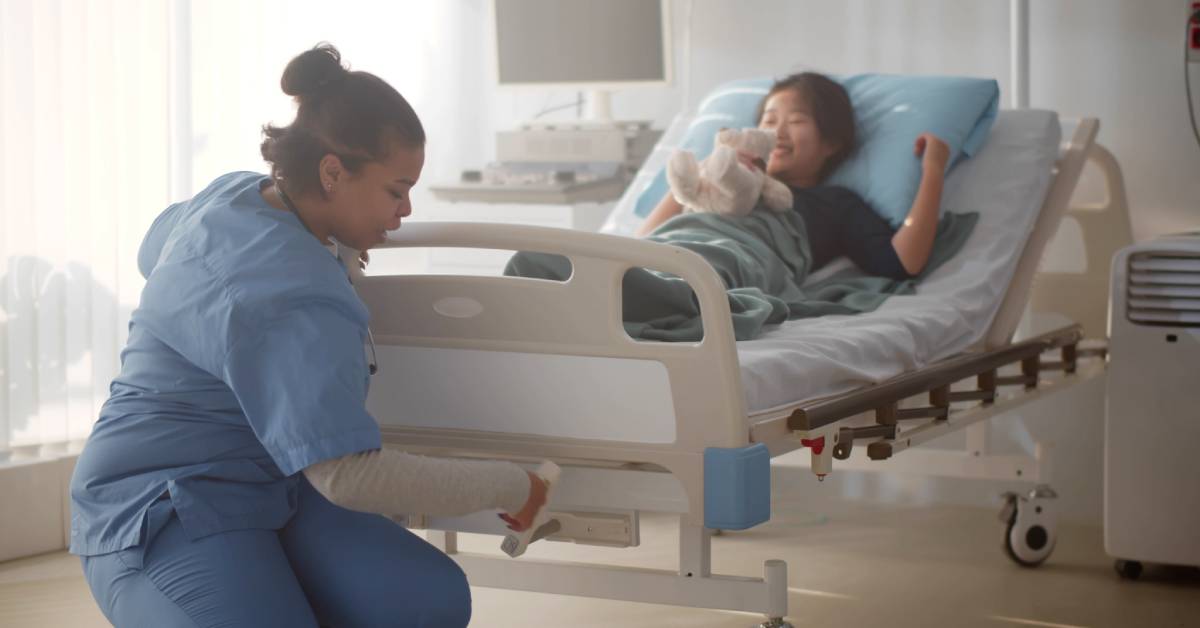Medical furniture’s functionality and durability can directly impact the quality of the healthcare services you provide. Whether you’re upgrading a clinic or outfitting an entire hospital, selecting a reliable supplier is key to supporting patient health and staff workflows. Use our eight tips for choosing a medical furniture supplier to find high-quality products at a good price.
Prioritize Quality Standards
High-quality medical furniture plays a big role in keeping patients safe and comfortable, which leads to better care. Reliable and sturdy furniture helps prevent breakdowns that could affect patient care or create risks for healthcare staff. Plus, well-made furniture built with premium materials can handle daily wear and tear, making it a smart and cost-effective choice over time.
Look for suppliers who provide products made from durable materials and those that comply with healthcare regulations. Certifications like ISO or FDA approvals can serve as benchmarks for quality, ensuring the furniture meets rigorous standards for safety and functionality.
Consider Reconditioned Medical Furniture
Reconditioned furniture is an excellent option if you’re looking to save on costs without compromising on quality. Reliable suppliers refurbish items to meet safety standards, often replacing vital components or improving them for better performance. This budget-friendly option also reduces environmental waste, making it an eco-conscious choice.
Opt for suppliers with expertise in refurbishing trusted brands. Properly reconditioned used medical furniture can perform as well as new products and will come with warranties, meaning you don’t have to sacrifice durability or safety for affordability.
Verify the Reconditioning Process
If you opt for reconditioned items, ensure the supplier follows a thorough and transparent reconditioning process. The process should include deep cleaning, rigorous inspections, repairs, and necessary replacements to bring the furniture up to established standards. Each step ensures the furniture operates safely and reliably in a demanding environment.
At Piedmont Medical, our reconditioning process begins with a thorough inspection of the hospital bed frame to identify and repair any bent or broken parts. We then completely disassemble, clean, and sand the frame before repainting it to look new again. Once the painting is complete, we reassemble the frame using new components as needed, such as OEM casters, arm rail plastics, or head and foot boards. Finally, we test the bed for electrical safety and performance before preparing it for shipment.

Ensure the Product Features Fit Your Needs
Matching the medical furniture’s features to your facility’s needs is another key to choosing the right supplier. Follow practical steps to identify your requirements.
- Assess the types of rooms or departments requiring furniture, such as patient rooms, surgical suites, or waiting areas.
- Determine the level of durability needed based on daily usage and cleaning requirements.
- Identify specific functionalities like mobility, adjustability, or built-in storage for better utility.
- Consider space limitations and select furniture that fits comfortably within your layouts.
- Ensure the furniture is compatible with existing medical equipment or systems within your facility.
- Prioritize ergonomic designs that support both patient comfort and staff efficiency.
- Check for features that address safety, such as anti-tipping mechanisms or rounded edges.
- Evaluate additional needs like infection control properties, including antimicrobial surfaces or easy-to-clean materials.
For example, when selecting a hospital bed, look for adjustable height and positioning options. Built-in side rails offer added safety, while features like easy-to-use controls and durable construction ensure the bed remains practical and reliable. Additionally, think about specialized features that may enhance functionality. For instance, beds with integrated scales allow for easy monitoring of patient weight, while models with advanced pressure-relief surfaces can help prevent bedsores.
Assess Customer Service
Great suppliers offer more than just quality furniture—they also provide excellent customer service. From the initial consultation to post-purchase support, clear communication and responsive assistance streamline the buying and setup process. The supplier should answer your questions, address your concerns, and help you find solutions tailored to your setup.
A dependable supplier makes it easy to understand the main features of their products and ensures they fit your facility’s needs. They can also help you figure out how the products will work with your current arrangement so that everything fits together as intended.
Check Delivery Services
Timely and careful delivery services can make all the difference in healthcare environments. Delays in furniture delivery can have ripple effects on patient care and hospital operations. Look for a supplier that provides reliable transit times, and make sure to ask about their delivery options if you’re in a location with unique logistical challenges.
They should also carefully package items to avoid damage during shipping. Protective plastic, blankets, foam padding, and corner protectors are just some types of packaging materials they might use to cushion items and prevent impact damage.

Understand Warranty and Support Policies
A strong warranty is a reflection of a supplier’s confidence in their products. Before committing, review their warranty terms for repairs, exchanges, or refunds. Clear policies allow you to hold the supplier accountable should issues arise, while flexible support policies increase trust.
Beyond warranties, examine additional assistance provided by the supplier. Do they offer quick replacements? Are they responsive to inquiries about repairs? These considerations ensure you’ll have support when it’s needed most.
Piedmont Medical offers a one-year parts replacement warranty with tech assistance by phone. If your reconditioned bed or stretcher is out of warranty, you can call us for assistance.
Evaluate Pricing and Value
While affordability is important, value matters most. Compare prices across suppliers and weigh them against the quality and durability of their offerings. Some suppliers might include bulk discounts or financing plans that help you stay within budget without cutting corners.
Take the following steps to evaluate medical furniture pricing and value:
- Determine if it will withstand daily use in a healthcare environment, and decide if the furniture’s quality and durability justify its price.
- Check for bulk purchasing discounts, financing plans, or leasing options that can help you stay within budget.
- Compare reconditioned furniture’s cost savings to new items. Ensure the reconditioned item meets the same safety and performance standards.
- Consider maintenance costs, warranty coverage, and the furniture’s lifespan to evaluate its overall return on investment.
A great medical furniture supplier balances quality, cost, and service to meet the unique demands of healthcare facilities. Whether you’re investing in reconditioned furniture or new pieces, ensure the supplier has high standards, reliable delivery, and helpful customer support. Clear policies and strong warranties add another layer of confidence, protecting your investment over time. By keeping these criteria in mind, you guarantee that the medical furniture supplier you choose will benefit your staff and patients.


Recent Comments